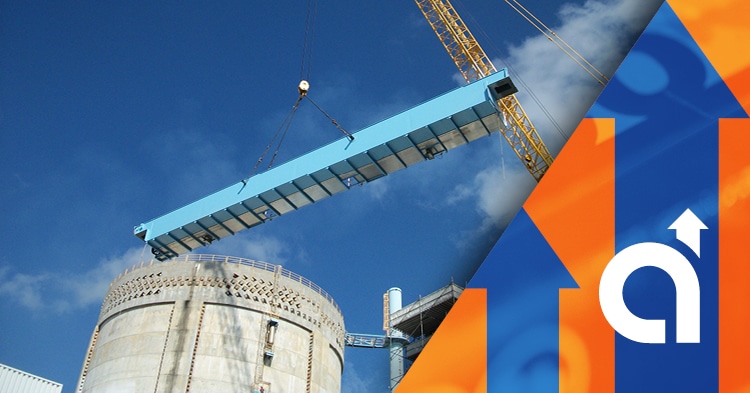A Guide for Plant Owners, Maintenance Teams & Asset Managers
How do you know when it’s time to retire an aging nuclear crane system? For many facilities, the answer comes down to performance, compliance, and cost — and waiting too long can create far bigger problems than a planned upgrade.
Crane systems play a central role in high stakes lifting operations inside nuclear plants. They support reactor maintenance, spent fuel handling, outage work, and other essential activities that must be carried out exactly as planned. When these systems begin to show their age, the risks compound quickly. That’s why recognizing the right moment to modernize isn’t just smart planning — it’s essential to long-term reliability.
When the Scope of Work Has Changed
Many nuclear facilities were built decades ago, and their crane systems reflect the demands of that era. But lift requirements evolve over time. New reactor maintenance tools, larger components, or more frequent outage work can strain legacy equipment. If your crane is being asked to do work it wasn’t originally designed for — whether that’s heavier lifts, tighter tolerances, or expanded safety requirements — that’s a strong signal it’s time to upgrade.
When Reliability Is Slipping
Even the most robust crane systems have a service life. Steel fatigue, motor wear, and obsolete controls can slowly erode performance. Warning signs often appear first as:
- Frequent repairs and unplanned downtime
- Long lead times for hard-to-find replacement parts
- Inconsistent performance during key lifts
When reliability issues start showing up in your outage schedule, the cost of standing still often outweighs the cost of modernization.
When Safety and Compliance Are at Stake
Nuclear lifting isn’t forgiving. A system that no longer meets current safety requirements or regulatory standards is more than just a maintenance concern — it’s a liability. Upgrading can help ensure:
- Redundant braking and fail-safe systems
- Enhanced precision and load-control features
- Compliance with updated industry and NRC requirements
Proactive investment in modern systems keeps plants in compliance and helps avoid costly, reputation-damaging incidents.
When the Numbers Point to an Upgrade
At some point, the math makes the decision for you. If the total cost of repairs, lost productivity, and outage delays is exceeding the investment in a modern system, it’s time to move forward. Upgrading often brings long-term savings through:
- Streamlined outage cycles
- Predictable maintenance costs
- Fewer emergency interventions
Case Study: St. Lucie Nuclear Generating Station
When the team at St. Lucie recognized that their crane no longer aligned with outage demands, they partnered with American Crane and Equipment Corporation to execute a targeted upgrade. The project included modern drive controls, enhanced safety and monitoring features, and increased capacity to match evolving operational needs. The result: improved reliability, schedule confidence, and alignment with current safety standards.
Ready to Upgrade?
An aging crane system might still be operational, but that doesn’t mean it’s still right for the job. Knowing when to upgrade protects your outage schedule, your safety record, and your bottom line.
If your facility is starting to see performance dips, outdated controls, or escalating maintenance costs, it may be time to talk strategy. The team at American Crane can help evaluate your current system, identify the best upgrade path, and ensure your plant is ready for the future.
Contact us to start the conversation.


